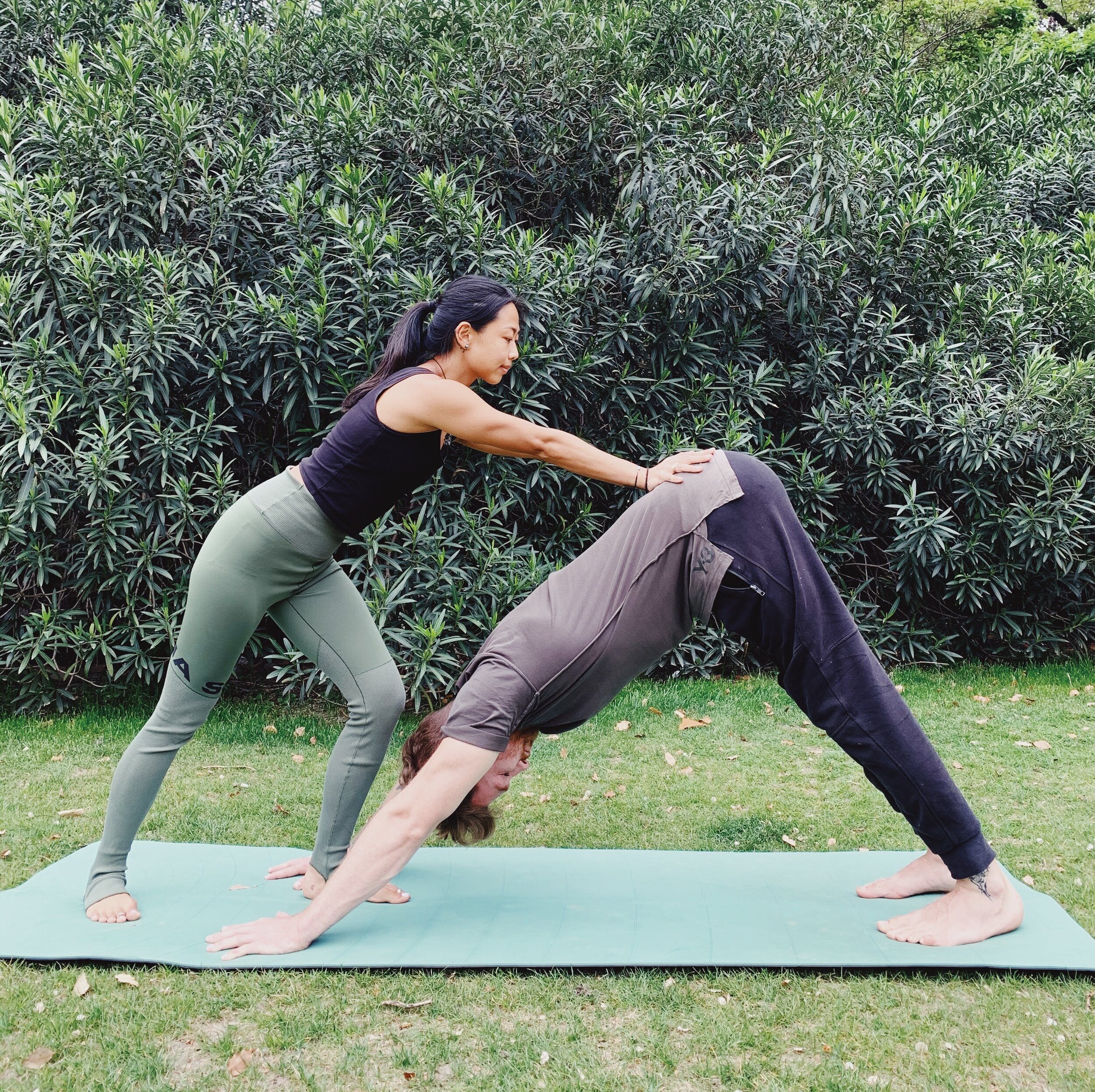My Favorite Mysore/Ashtanga Adjustment
For those of you who are not familiar with what a Mysore yoga class is, it is a class where you practice the Ashtanga sequence at your own pace, without the verbal guidance of the teacher. The teacher is present in the classroom, offering help when needed and mostly walking around and giving students physical adjustments. These physical adjustments are a major part of the Mysore teachers are doing during the class.
Why adjust students at all?
- Some adjustments will help practitioners reposition their body for healthier alignment. For example, if someone in lunging in a way that might put too much pressure on the knee, the teacher might help them reposition that leg to avoid future injuries.
- When students have difficulty entering a certain pose, teachers will often help them to enter the posture. In Ashtanga, it is common that students can not bind their arms in some of the seated postures (Marichiyasana A-D), so teachers might offer to help by rotating and moving their arms for them.
- There are also adjustments that help students get deeper into a pose (this is very controversial in the yoga world). For example, in Prasarita Padatonasana C, teachers will often push the arms of the students until their hands touch the floor.
- And then there is the category of hands on adjustments that I call “comforting” or “mothering”. In the Mysore setting, this is my favorite one, as a student and also as a teacher. Continue reading on to hear why I love them!
The Comforting Touch
What is it exactly?
- Simply put, it is a gentle touch that does not cause pain. It is a touch that is soft and warm. A touch that says, “Hi, I am here for you.”
When is it appropriate to offer this touch? For me, there are a few moments in the primary series that I offer this.
1. Downward facing dog during the Sun Salutations. When the practitioner is in this posture for the 3rd time, I will come and gently press my palms into their sacrum area. Nothing too aggressive. This adjustment allows their spine to lengthen and it takes some weight/pressure off their shoulders and wrists. I see this as a way to say “hello”, “good morning”, “welcome to class”, or “I see/acknowledge you”.
2. Seated Forward Fold after the back bending sequence. This is the one that is most important to me! Why do I find this adjustment to be so meaningful? It is because back bending is SO intense. Back bending can be so scary! It is a lot of hard work. So after the back bending practice is complete, students sit in a seated forward fold as a counter pose. This is when I will place my hands on their back as a way to say, “Hey, I know that was really difficult, but you did great. It is over now and you can relax for a moment.” I often even give them a short back massage in this posture. For me, as a practitioner, this feels very very good for my hard working back muscles! It makes me feel nurtured and cared for.
3. Childs pose after the headstand. The headstand is often held for quite a long amount of time and some students might begin to feel pressure on their neck. When they are resting in Childs pose after the headstand, I will give them a gentle neck rub to help release any tension. Another one I do is just gently palming their sacrum area. Again, nothing too aggressive! Just a gentle touch to say, “Hey, you are wonderful human being.”
Happy practice, yogis!
PS - if you do not want to be touched, it is absolutely ok to say to the teacher, “No thank you, I would prefer not to be adjusted.”


